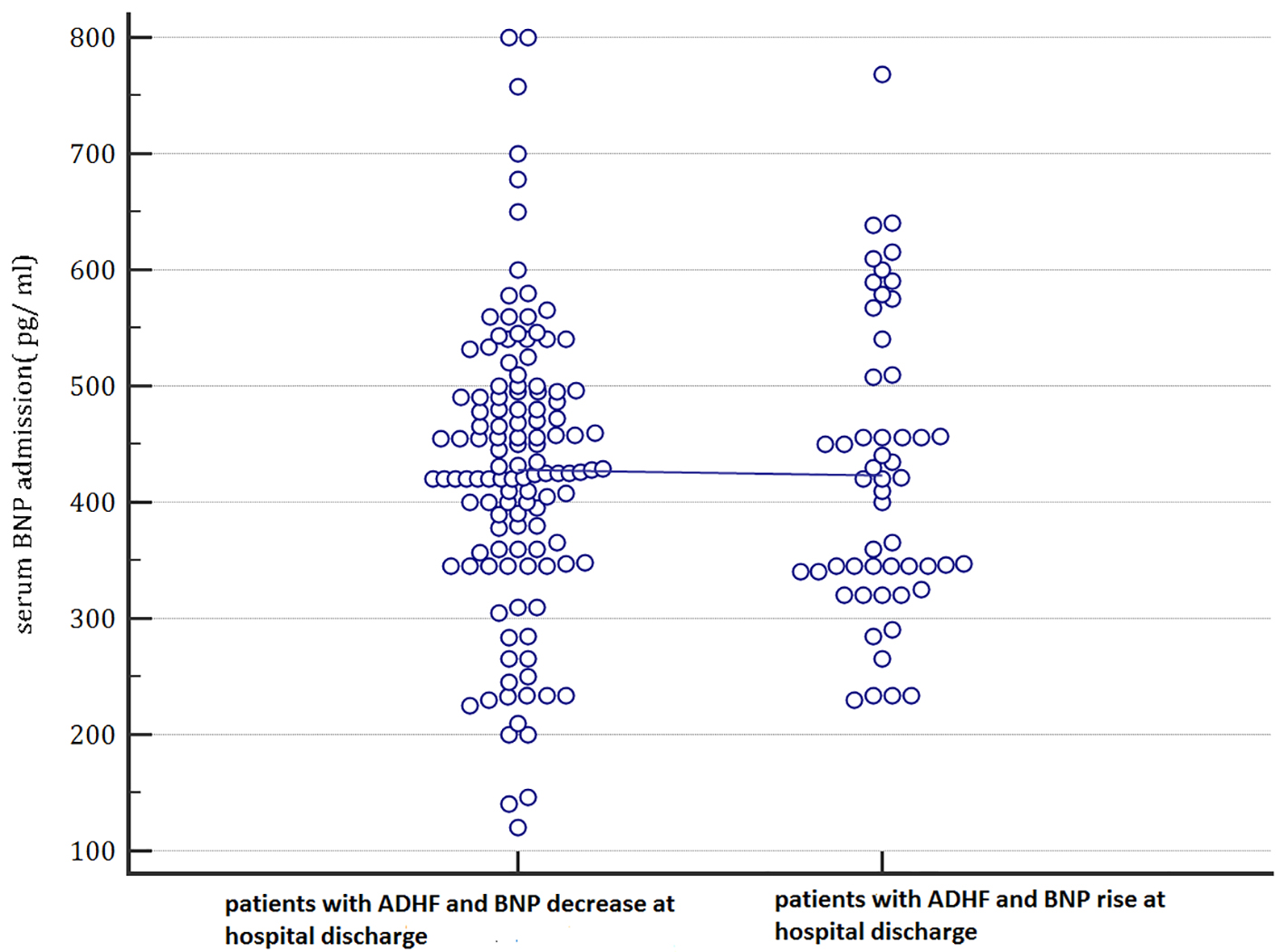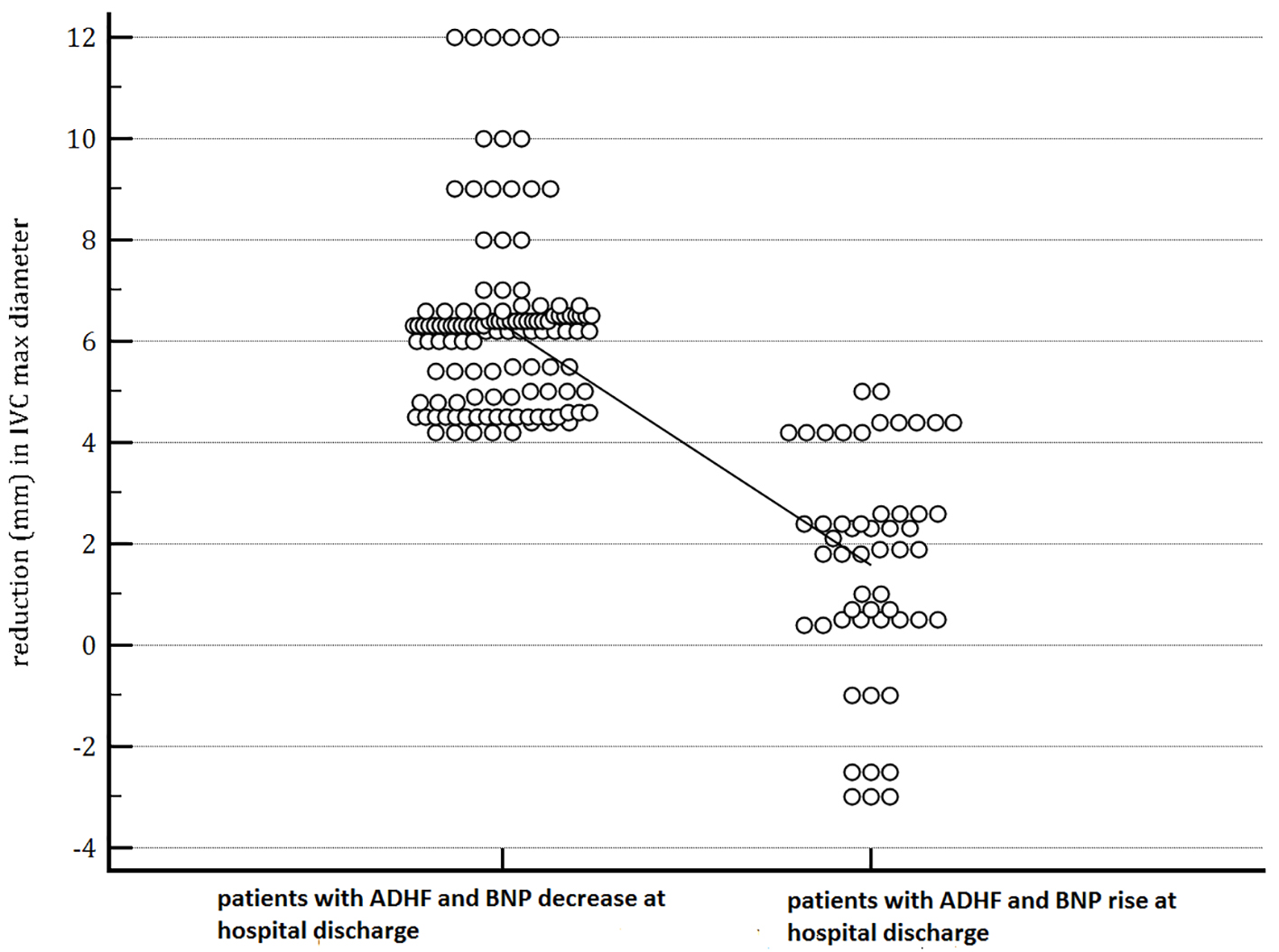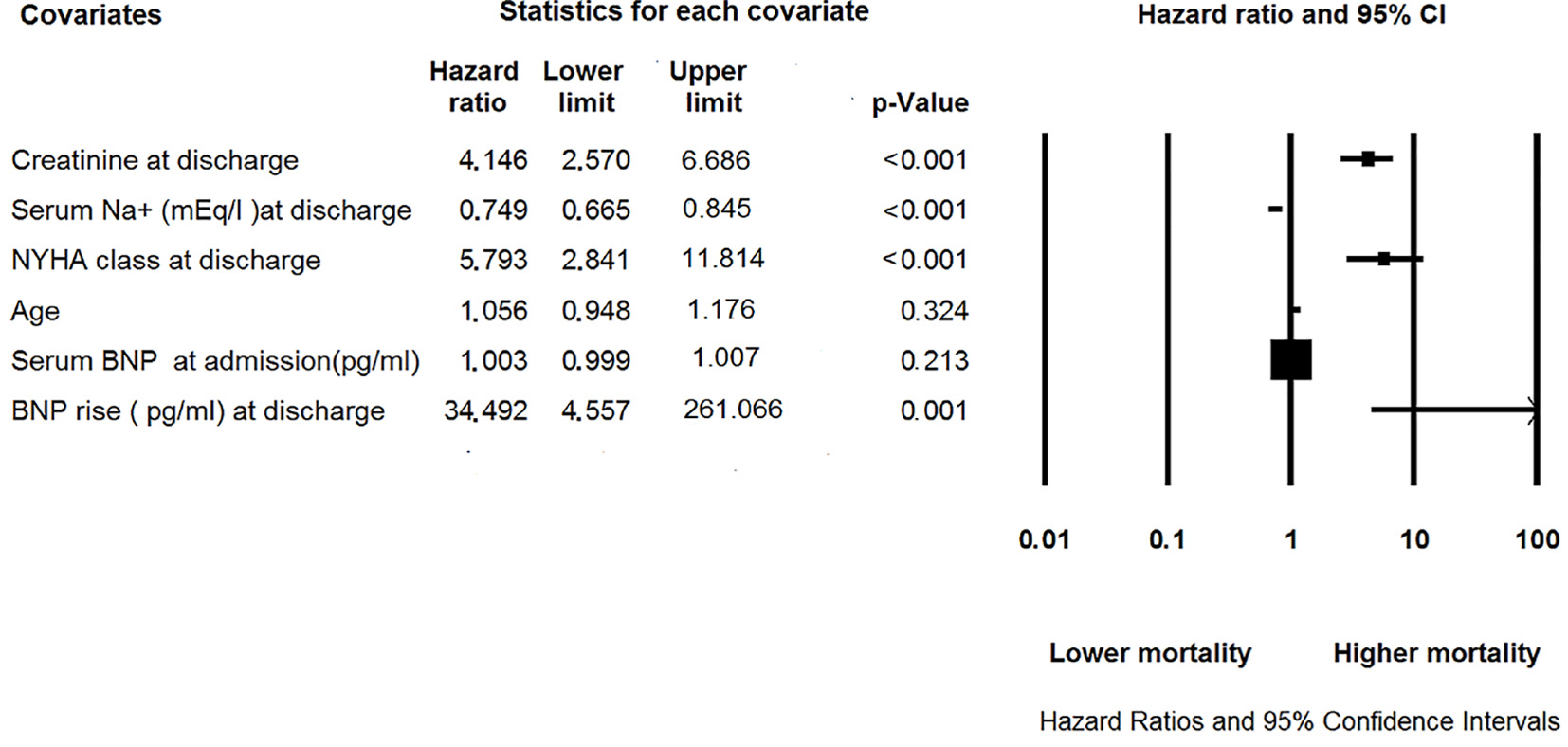
Figure 1. In this plot, the admission serum BNP values are categorized depending on the values that they will assume at the hospital discharge (patients with BNP decrease during hospital stay until discharge compared to patients with BNP rising at hospital discharge). Based on these findings, admission serum BNP was not able to predict the subsequent evolution of BNP levels. Indeed, there were not any differences between basal BNP mean values of patients who will evolve into a BNP decrease at hospital discharge and of those who will show a BNP rise at hospital discharge. ADHF: acute decompensated heart failure; BNP: B-type natriuretic peptide; pg: pictograms.

Figure 2. The figure shows that patients with BNP increase at the time of discharge had a lower reduction in IVC diameter from admission to discharge (1.58 ± 2.2 mm vs. 6.32 ± 1.82 mm, P = 0.001). In the dot-plot, a continuous line connects the means of the two groups (patients with decreasing BNP and the patients whose BNP shows an increase at discharge).

Figure 3. Forest plot summarizing results of Cox proportional hazard analysis of predictors of 6-month all-cause mortality in our retrospective study that analyzed 177 patients hospitalized for acute decompensated heart failure and undergone clinical follow-up after their hospital discharge. BNP: B-type natriuretic peptide; NYHA: New York Heart Association.


